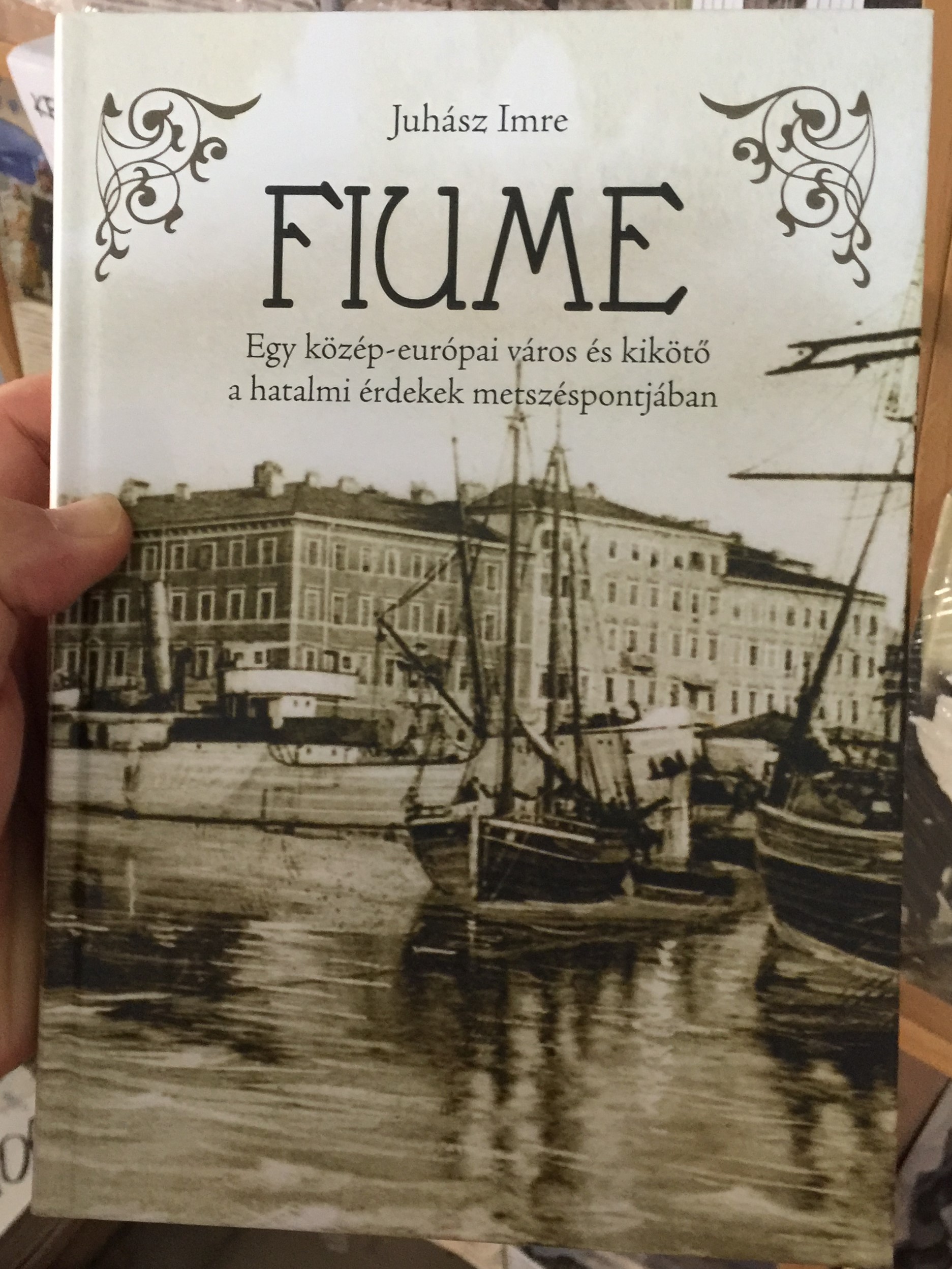Description
Fiume - Egy közép-európai város és kikötő a hatalmi érdekek metszéspontjában by Juhász Imre / Rijeka - A city in central-europe in the crosshairs of powers / Hardcover / Heraldika kiadó
Hardcover 2020
ISBN: 9786155592140 / 978-6155592140
ISBN-10: 963409256X
PAGES: 512
PUBLISHER: Heraldika kiadó
LANGUAGE: Hungarian / Magyar
Hungarian Description:
Már több mint 100 éve, hogy az utolsó magyar kormányzó Fiume (mai hivatalos nevén: Rijeka) elhagyására kényszerült. Ezzel új fejezet kezdődött a – Szent Koronánk ékkövének 1779-től számított – város történetében. A már addig is két ízben erővel megszakított újkori magyar fennhatóság nem egészen másfél évszázada azonban bátran állhat a történelem ítélőszéke elé. A magyar közigazgatás második visszatérésétől, azaz 1870-től soha nem látott ütemben fejlődő kikötőváros az I. világháború előestéjére – nagyrészt az óriási mértékű állami szerepvállalásnak köszönhetően – Európa 10. legnagyobb kikötőjévé küzdötte fel magát. A töretlenül fejlődő Fiume persze – miként napjainkban, úgy a XX. század elején (is) – mindenkinek mást jelentett: a tőkepénzes mágnások, a robotoló dokkmunkások, a hazától végleg itt búcsúzó kivándorló százezrek, a tenger viszontagságaihoz szokott „hajós emberek”, a helyi polgárok vagy a pesti kávéházak törzsvendégei hol előnyeit, hol hátrányait vagy éppen idealizált képét tapasztalhatták meg. Juhász Imre több vonatkozásban is hiánypótló könyve felidézi Fiume történelmi múltját, és nagyszámú fotó segítségével valódi időutazásra és képzeletbeli sétára invitálja az olvasót. Kuriózuma a várost érintő magyar jogszabályokra fókuszáló jogtörténet – amely hangsúlyosan kapott helyet a műben –, mivel ilyen összefoglalás eddig nem jelent meg magyarul. Végre nem más nemzetek, ellenérdekelt utódállamok politikailag motivált, a történelmet legjobb esetben is agyonhallgató bédekkerét tarthatjuk kezünkben, hanem igazi „szerelmes földrajzot”, amely minden magyarul érző embernek közelebb hozhatja közös múltunk egy darabját.
English Summary:
Rijeka, formerly known as Fiume, is a city located in the northern tip of the Kvarner Gulf in the northern Adriatic. It was part of the Roman province of Dalmatia, and later of the Kingdom of Croatia. It grew during the 12th to 14th centuries as a seaport within the Holy Roman Empire, trading with Italian cities. Under the ownership of the House of Habsburg from 1466, it was made a free city, and although part of the Duchy of Carniola it developed organs of local self-government.
During the 16th and 17th centuries Rijeka came under attack from both Turkish and Venetian forces, and became a base for irregular Habsburg troops known as Uskoks. Its maritime trade was suppressed by Venice until the late 17th century, when peace was concluded and the Habsburgs set about developing the city as a major port. Sugar refineries and other industries were also introduced. Rijeka was attached to the Kingdom of Hungary in 1779, retaining autonomous status, although the Kingdom of Croatia also maintained a claim.
Rijeka was occupied by Napoleonic France between 1809 and 1813 as part of the Illyrian Provinces. After reconquest by Austria, it was placed within the Kingdom of Illyria until 1822 and then restored to Hungary. Industrial development recommenced, the port was modernised and a naval base created, and railways were constructed connecting the city with Hungary and Serbia. On the Austro-Hungarian Compromise of 1867, Hungary gained equal status with Austria, and Rijeka, as Hungary's main port, became a rival to Austria's port of Trieste. Under the leadership of Giovanni de Ciotta the city was extensively rebuilt during the late 19th century. Resulting from further industrial expansion and immigration, Italians became the largest single group in the city.
On the defeat and dissolution of the Austro-Hungarian monarchy in 1918, Italy and the new Kingdom of the Serbs, Croats and Slovenes (later the Kingdom of Yugoslavia) both laid claim to Rijeka. Negotiations in 1919 at the Paris Peace Conference were pre-empted by the coup led by Gabriele D'Annunzio, setting up the Italian Regency of Carnaro based in the city. This was suppressed by Italian troops the next year, and under the Treaty of Rapallo the independent Free State of Fiume was established. However, after Benito Mussolini became ruler in Italy, Rijeka (as Fiume) was annexed to Italy in 1924.
Rijeka was occupied by German troops in 1943 after Italy came to terms with the Allies of World War II, and experienced extensive damage from Allied bombing. After fierce fighting it was captured on 3 May 1945 by Yugoslav forces and annexed to the Socialist Republic of Croatia under the Paris peace treaty of 1947. Most of the Italian population fled or were removed, and were subsequently replaced by incomers from other parts of Yugoslavia. Rijeka became the largest port in Yugoslavia, and other growth sectors included port traffic, oil and coal. On the breakup of Yugoslavia in 1991, Rijeka became part of independent Croatia, but has experienced economic difficulties with the closure of many of its older industries.
















